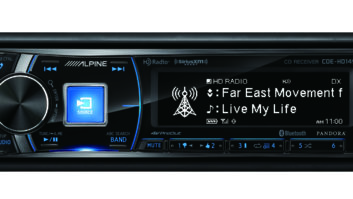
SAN FRANCISCO — SomaFM is a multichannel Internet broadcaster, and we use OtsAV for most of our channels. A few of our music directors are Mac OSX-based and use a Mac-based playout system but our most popular channels and the majority of our listeners are listening to OtsAV-powered broadcasts.
We’ve developed a workflow where we choose music from all the incoming tracks from either iTunes or Winamp, and build playlists of music there for the various music categories (e.g. high rotation, low rotation, oldies, hot & new, etc.). Perl scripts take these playlists of MP3 files, and using the ID3v2 or v1 tags, will rename the files using the Ots file name encoding format to load the metadata for the songs, copying them from the local workstation to the OtsAV playout system running in our leased datacenter space.
SCHEDULING
These basic categories are then used within the OtsAV scheduler, which is pretty amazing. This is one of the killer features of Ots. It’s more of a scheduling tool set than a GUI-based scheduler, but because of this it is extremely flexible. It’s a simple programming language, but is versatile. You can fit playlists into a specific time-block, and Ots is smart enough to recursively go through your music database and based on your rules, find a way to assemble a playlist that will perfectly fit a block of time.
Alternatively, you can run it in a mode where it’s not time-based, but rather based on iterations of groups of songs and other audio assets. For some of our channels that don’t run an hourly clock, we use this mode. I like that OtsAV doesn’t “sound” like any of the more popular broadcast schedulers. I’m not sure what it is, but I attribute it to the flexibility of the scheduling tool and the great sounding segues.
The other thing we love about OtsAV is the overall sound. Out of the box with no customization it sounds better than most other automation/playout systems. The process for auto-generating segue data is great and only rarely needs manual intervention (typically only when using tracks that are from continuous-mix CDs does one have to manually adjust the segues).
One “secret” of OtsAV is that it can be run easily over Remote Desktop. This works out great for remote broadcasts where we can control the system from a laptop from anywhere. In fact, many of our DJs/channel directors run their entire broadcasts remotely by connecting their laptops to our Ots systems living in a datacenter in downtown San Francisco.
For doing Internet-only or terrestrial side channels, you can actually run OtsAV playout and the stream encoding software on a single box. The hardware setup we have standardized on is a Supermicro 5015A-EHF-D525 base system with 2 GB RAM, running Windows XP or Windows 7, an Orban 1101e audio processor board, Orban’s OptiCodec-1010 stream encoding software (although you can optionally use the Shoutcast stream encoder). The playout, processing and encoding run on a single machine and the CPU load is rarely over 25 percent. The Supermicro systems are also very power efficient which can add up over time in power savings.
If you’re on a budget and can’t afford a $2,000 Orban audio processor board and encoder, you can use the built-in OtsAV audio processing system, which is surprisingly good. The wideband AGC excels in the fact that the attack and release times can be set to really long times (over 100 seconds!). I’ve yet to run across an AGC — hardware or software — that can be that set to those slow of times. It’s really brilliant at gain riding.
On some of our channels we run just the Ots internal processor with really slow attack and release on the AGC and just a little bit of compression; mostly to correct for the occasional audio that changes too fast for the AGC to react to.
It also has a graphic EQ though we don’t often use it. However, in the rare case it’s super handy to have it there.
There are a lot of features of OtsAV we don’t use (such as the virtual “scratching,” the video features), but it’s nice to know that the system has that versatility.
OtsAV offers a free trial for download at its website.
For information, contact OtsAV at www.otslabs.com/email or visit www.otsav.com.









